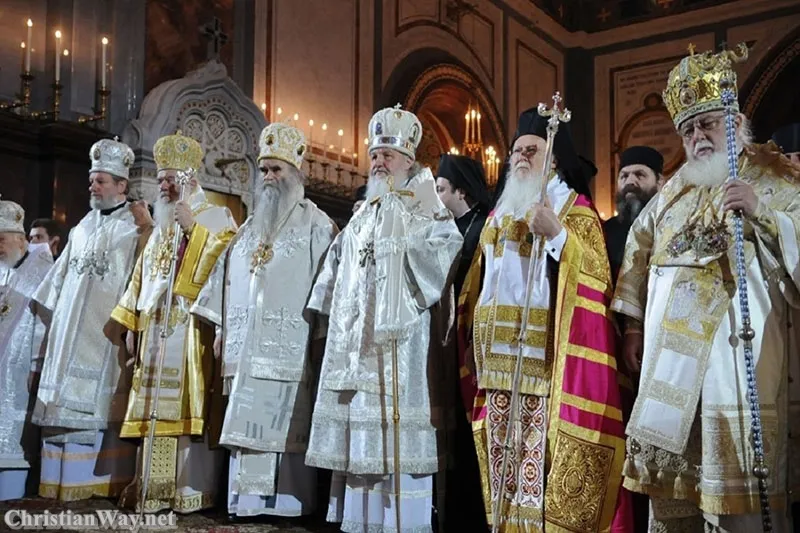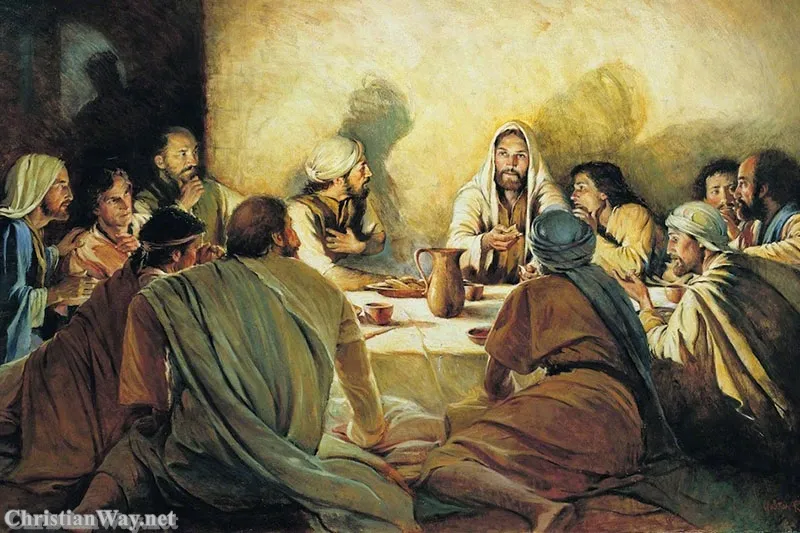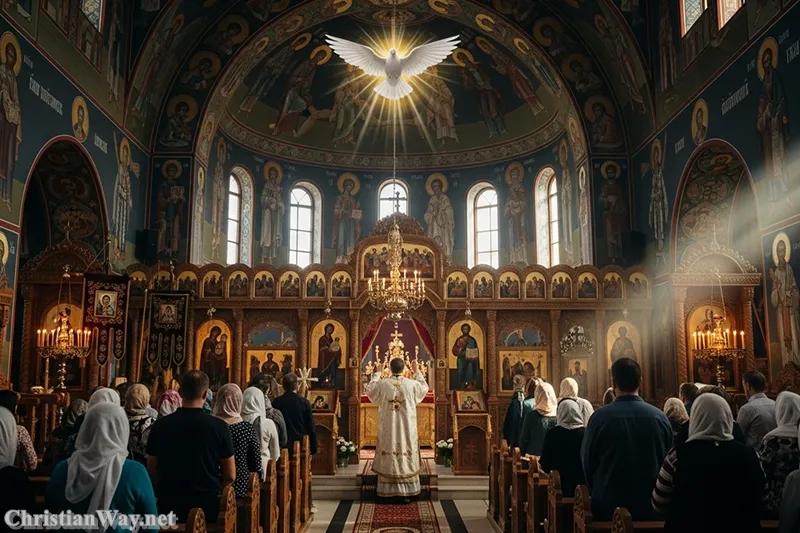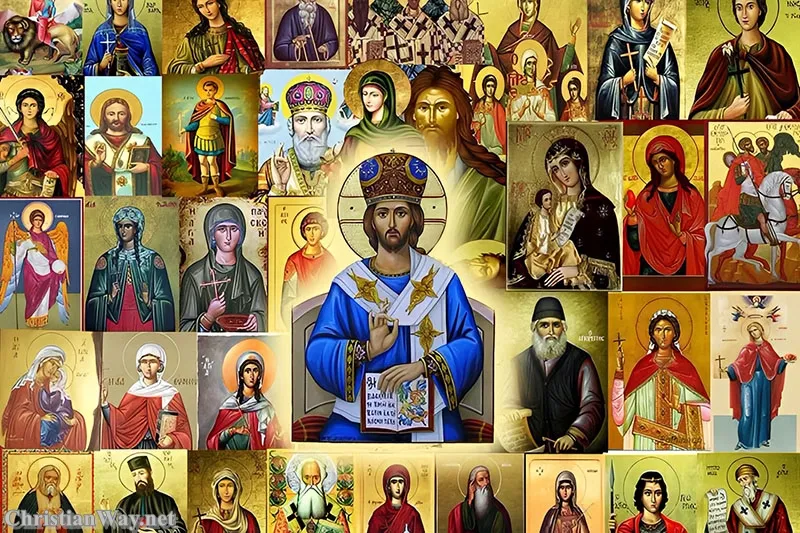Dear friends in Christ,
Throughout the centuries, countless believers have sought the face of God not through fleeting philosophies or passing movements, but through a living and unbroken communion that stretches back to the Apostles themselves. The Eastern Orthodox Church stands as one of the most ancient expressions of that communion — a Church radiant with the light of divine mystery, where faith is not only believed but lived, sung, and breathed through prayer, icons, and the sacramental life.
To speak of Orthodoxy is to speak of continuity — of faith that has endured empires, schisms, and persecutions, yet has never ceased to proclaim that Christ is risen, and life reigns. It is a faith deeply rooted in the early centuries of the Christian story, in the great councils, in the martyrs and fathers, and in the mystical beauty of worship that seeks to reveal heaven on earth.
In this reflection, let us journey together through the heart of the Eastern Orthodox Church — its history, its theology, its worship, and its profound witness to unity with God. May we find in its life a mirror of what it means for the Church to remain steadfast in love, beauty, and truth.
🌿 The Apostolic Roots of the Orthodox Church
The Eastern Orthodox Church traces its origin directly to the communities founded by the Apostles themselves — especially in cities like Jerusalem, Antioch, Alexandria, and later Constantinople. These early centers became the heart of Christian life in the East, each preserving and transmitting the apostolic faith.

When we speak of “Orthodoxy,” we speak of right belief and right worship — orthos meaning “true” or “straight,” and doxa meaning “glory” or “worship.” Thus, the Orthodox Church sees itself as the guardian of the fullness of the apostolic faith: the unaltered Gospel, the authentic sacraments, and the living tradition of the undivided Church of the first millennium.
The Seven Ecumenical Councils
Between the 4th and 8th centuries, seven great councils gathered bishops from across Christendom to clarify the faith and defend it from heresies. These councils defined doctrines such as the divinity and humanity of Christ, the mystery of the Holy Trinity, and the proper veneration of holy icons.
For the Orthodox, these councils remain the benchmark of true Christian teaching — a testimony to how the Church, guided by the Holy Spirit, discerned truth amidst conflict. As the Nicene Creed professes:
“We believe in one, holy, catholic, and apostolic Church.”
This Church, the Orthodox believe, continues in the same faith, preserving it not as a relic of the past but as a living flame that illumines the present.
🕊️ The Great Schism and the Path of Continuity
In 1054, the Christian world experienced a tragic division known as the Great Schism, separating the Eastern Orthodox Church from the Roman Catholic Church. While the theological and political reasons were complex — involving language, culture, and papal authority — the result was the breaking of visible unity between East and West.
Yet the Eastern Church did not see itself as departing from the universal faith. Instead, it held that it remained within the unbroken tradition of the ancient Church. The liturgy, sacraments, and theology of Orthodoxy continued unchanged, and to this day, Orthodox Christians regard their Church as the true continuation of the early apostolic and conciliar Church.
This unbroken line is not a matter of pride, but of humility — a witness to God’s faithfulness through history. The Orthodox do not view the Church as a mere institution, but as the very Body of Christ, alive and sanctified by the Holy Spirit.
🌸 The Spiritual Vision of the Orthodox Faith
Theosis: Becoming Partakers of the Divine Nature
Perhaps the most distinctive teaching in the Eastern Orthodox Church is the doctrine of theosis — the process of becoming one with God. Drawing from 2 Peter 1:4, the Church teaches that the goal of human life is to “become partakers of the divine nature.”
This does not mean we become gods by nature, but that through grace, prayer, and the sacraments, we are united with the life of God. Salvation, then, is not merely a legal acquittal or a distant hope; it is participation in divine life — communion with the living Christ who dwells within us.
Saint Athanasius, one of the great Fathers of the Church, expressed it beautifully:
“God became man so that man might become god.”
This mystical theology is not an abstract idea; it is the heartbeat of Orthodox spirituality. Every liturgy, every prayer, every icon, and every fast serves this purpose: to draw the soul closer to divine communion.
🌺 The Beauty of Orthodox Worship
To step into an Orthodox church is to enter a world suffused with light, color, and prayer. Icons gaze from the walls like windows into eternity; incense rises like the prayers of the saints; the chants and hymns carry the soul beyond words.
The Divine Liturgy
At the center of Orthodox life stands the Divine Liturgy, most often attributed to St. John Chrysostom. This sacred celebration is not simply a human ritual but a mystical participation in the heavenly worship of God.
The faithful join the angels and saints in offering thanksgiving for Christ’s sacrifice. Bread and wine become the true Body and Blood of Christ — not explained by philosophical definition, but embraced in mystery and faith.
In the Liturgy, heaven and earth meet; time and eternity intertwine. Every element — the gestures, the vestments, the candles — bears symbolic meaning, pointing to the Kingdom of God.
The Role of Icons
Icons are central to Orthodox prayer and theology. They are not mere art, but sacred windows revealing divine reality. The iconographer paints not with imagination but with prayer, fasting, and faith.
As St. John of Damascus taught, “The honor given to the image passes to its prototype.” Thus, when Orthodox Christians venerate an icon, they are not worshiping wood and paint, but showing love and reverence to the person it represents — Christ, His Mother, or the saints.
🌿 The Life of Prayer and Asceticism
Orthodox spirituality calls the believer to constant conversion — a turning of the heart toward God. Through prayer, fasting, almsgiving, and sacramental life, the Orthodox Christian seeks purification of the soul and union with divine love.
The Jesus Prayer
One of the most beloved prayers in Orthodoxy is the simple yet profound Jesus Prayer:
“Lord Jesus Christ, Son of God, have mercy on me, a sinner.”
This prayer, often repeated in silence, becomes the rhythm of the heart. It is not only a cry for mercy but a dwelling in the presence of Jesus Himself. The goal is not mere repetition but transformation — the sanctification of the mind and heart through unceasing remembrance of God.
🕯️ The Communion of Saints
The Eastern Orthodox Church holds a deep sense of connection between the living and the departed. The saints are not distant figures but living members of the same Body of Christ, praying with and for us.
This communion extends through the ages, binding heaven and earth together in one unbroken fellowship of love. The feast days, hymns, and icons of the saints remind the faithful that holiness is not reserved for the few but is the destiny of all who live in Christ.
🌍 Orthodoxy in the Modern World
Today, the Eastern Orthodox Church is composed of several self-governing (autocephalous) churches — such as the Greek Orthodox, Russian Orthodox, Serbian, Romanian, and others — united in faith and sacraments.
While diverse in culture and language, they remain one in doctrine and worship. This unity without uniformity is one of Orthodoxy’s strengths — a reminder that the Gospel transcends every nation and tongue.
In the modern age, Orthodoxy stands as a witness to the unchanging truth of Christ amid a rapidly shifting world. Its silence, beauty, and steadfast faith offer an antidote to noise, confusion, and fragmentation.
For many seekers today, Orthodoxy offers not novelty, but home — a return to the timeless, to the mystical, to the reality that God is near and that His Church still lives in holiness and love.
🌾 Reflect and Pray
Dear brothers and sisters, the story of the Eastern Orthodox Church is not merely history — it is a living testimony of faith preserved through centuries of struggle and grace. It reminds us that the Church is not a human construction but the dwelling of the Holy Spirit among us.
May we learn from the Orthodox tradition to seek God not only with our minds but with our hearts; to find beauty in worship, silence in prayer, and communion in love.
Let us pray:
O Lord Jesus Christ, eternal Word of the Father,
You who shine in uncreated light,
Draw our hearts toward the fullness of Your truth and mercy.
Teach us to see You in all things,
And to love Your Church, one and holy, with undivided faith.
Grant that we may live in unity, humility, and peace,
Until the day we behold You face to face in glory.
Amen.
— Fr. John Matthew, for Christian Way




